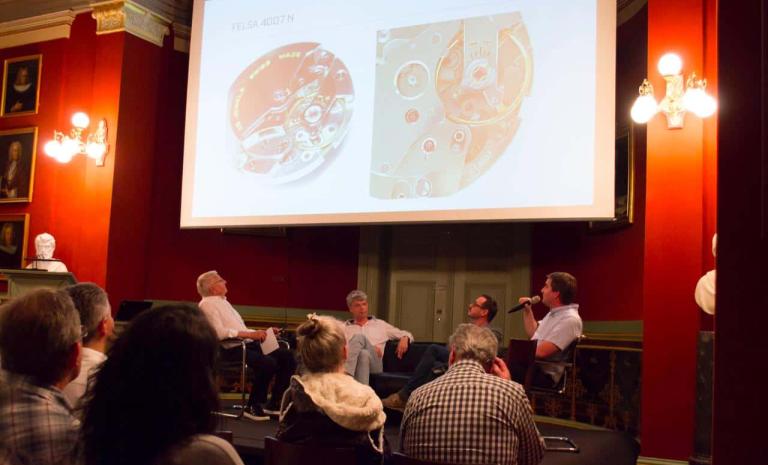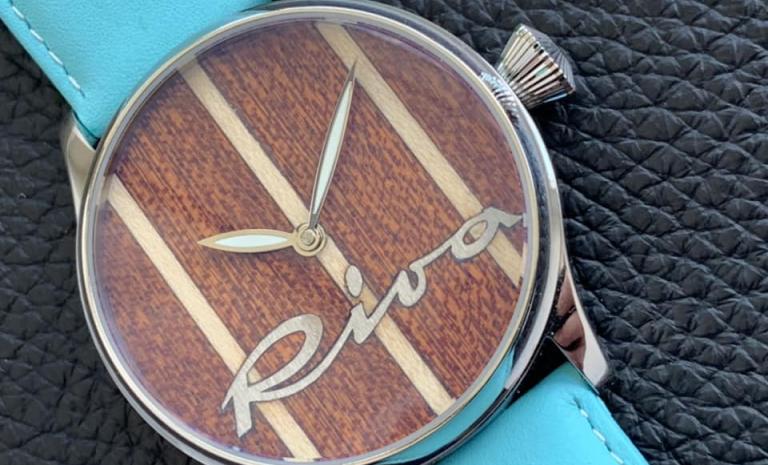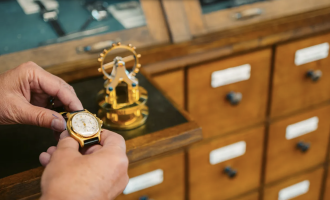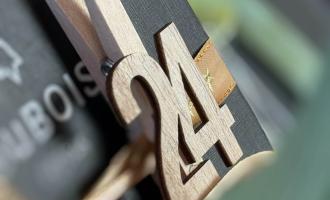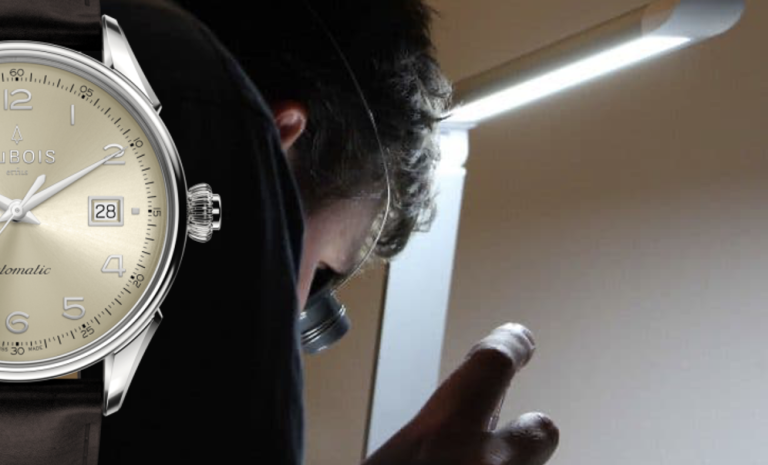
Exclusive interview with Thomas Gronenthal on DBF008
We recently traveled to Germany and had the opportunity to talk at length with watch connoisseur, aficionado and blogger Thomas Gronenthal. This resulted in a multi-faceted interview on his enthusiasm for timepieces and view on DuBois et fils watches and movements. Of course, we also wanted to know his thoughts on our latest collection DBF008.
All questions and answers are here:
The blogger about his passion for watches
DuBois et fils (DBF): You’re a watch enthusiast and connoisseur, write about watches as a journalist, and have been running watchthusiast.de since 2015 – what kind of watches are your main focus?
Thomas Gronenthal: Actually, all of them – but rarely with quartz watches. My special love is for older watches, each of which is characterized by a special movement. While very similar movement concepts dominate today– from ETA to Selitta to Kenissi and LaJoux-Perret – the movements of Schild, Felsa, Peseux, many old-school manufacturers, have their own special charm. In most cases, you can tell that after-sales service played an important role in the development of the movements. With newer movements, for example Swatch Group brands, oftentimes the individual movements are no longer serviced- they are simply replaced. I think that’s a shame. Nevertheless, I give every watch a fair chance – even if the drive may have come off the shelf.
What difference does it make whether you're into quartz watches or mechanical timepieces?
Thomas Gronenthal: It's the soul that makes the difference. Mechanics always work individually; each movement has its own characteristics and key values. I can now determine the condition of an ETA 2824-2 by ear, that’s how well I know the movements. Quartz watches also contain mechanics, but the impulse comes from a battery or an oscillating crystal and then a coil. It's not as charming.
And one thing which fascinated me even as a primary school student: the fluid gliding of a second hand in a mechanical watch. Depending on the frequency, the steps are so small that they’re hardly noticeable. That's what I love about mechanical watches.
You know numerous brands, you take watches apart, you assemble them, and even create your own models. What’s the attraction? What still fascinates you about watches after all these years?
Thomas Gronenthal: The allure.... Every watch has its own appeal, because behind every watch there is a story, a person, a designer who has put in a lot of – or less – effort and likewise an engineer or watchmaker who has also put in a lot of – or less – effort.
As my collection grew and grew, I jokingly said that I was looking for the perfect watch and just hadn't found it yet. That's actually somewhat true, because even watches that I build myself - mostly unique pieces with skeletons or dials made of certain materials that normally have no place in a watch – don't meet all the criteria. But they are all beautiful – and it always fascinates me when I assemble a movement, insert the balance wheel and apply tension to the mainspring for the first time. Then the timepiece starts ticking and the sun comes up – sometimes even in the middle of the night, since those are my usual workshop hours.
I suspect and hope this attraction will never diminish.
What is the first thing you notice when you look at a watch?
Thomas Gronenthal: Everything that I can take in at the same time. After all these years, the look is very focused and is supported by the haptics. I take a new watch in my hand, feel the shape with my fingertips and afterward I can tell very precisely how and with what effort the case was made. Then I pay attention to details such as the length of the hands – it's amazing how many manufacturers leave out crucial millimeters here. The workmanship of the dial and the hands – this shows what a watch brand really wants: money for nothing, or value for money. However, these details are usually only noticeable to the trained eye – and are also difficult to see with the naked eye.
The historic movements and the caliber AS-1985
DBF: DuBois et fils has a collection of original historical movements. You are one of the few people who has actually seen them - or parts of them. What makes the pieces so exceptional or even valuable?
Thomas Gronenthal: All of these movements date from a time when CAD design – technical components developed with computer assistance – were not yet possible. It wasn't until the Valjoux 7750, introduced in 1974, that computers began to play a significant role in design in the industry. However, these historic movements were designed by hand – from sketches to prototypes, without computer calculations. Back then, development took correspondingly longer, but the movements were bulletproof. Outstanding rate values, long maintenance intervals and absolute suitability for everyday use were the requirements at that time – no gimmicks that are so readily sold as high watchmaking art today.
New automatic movements are also being produced today. Can they keep up with their historic role models? What is the argument in favor of making new watches with historic movements?
Thomas Gronenthal: The amazing thing is that the majority of watch movements produced today are actually historic designs. ETA movements such as the 2892-A2, the 7750 or the 2824-2 are designs from the early 1970’s. Some of them have an even longer history – the majority of ETA calibers still date back to the days of Eterna, Peseux, Unitas and Valjoux. Even modern developments such as the ETA Powermatic movements with 80 hours of power reserve are nothing more than an old Eterna construction that has been tuned with numerous details like an aging VW Golf. It isn't something really new.
Therefore, historic movements, even from manufacturers that no longer exist, are a serious alternative. Technically, they are mostly on par with modern ones, and some are clearly superior in terms of service life. A solid oscillating AS movement with 21,600 A/h or the Felsa 4007N will ultimately live longer than a nervous fast oscillator with 28,800 A/h or more.
In a new watch with a historic heart, I especially see the appeal of the natural limitation; in addition, one owns a piece of real history, which was partially lost in the quartz crisis. Certainly, such a watch is the most sustainable way to display time. Because in addition to a long service life, no more resources have had to be used for the production of the movement. What is important too is the problem-free and long-term supply of spare parts, which in the case of DuBois et fils is given for generations.
Let's take a closer look at the AS-1985 caliber. We are installing 330 of these movements into a completely new collection. What do you notice about the movement?
Thomas Gronenthal: AS movements differ significantly from designs like the ETA Eterna movements. Although AS also has a central rotor here, the movement is divided very intelligently into individual assemblies. This makes the AS (after-sales service) extremely easy – for example, if there is a problem with the mainspring, a watchmaker has only to loosen one bridge and can completely remove the mainspring barrel. With an ETA or Selitta movement, the rotor must be loosened, the automatic bridge and the barrel bridge. This shows that at AS the engineers thought like watchmakers back then.
In addition, there is a fairly efficient winding system that works well over years. This is an issue, especially for people who sit a lot at work. And a special gimmick is the quick-switching date display, which DuBois et fils has more than perfectly integrated with a pusher in the crown. It should be said that in the 1960’s, few watches had a true quick-set date mechanism – because the watches were built to be worn day in and day out, not to be collected. Therefore, the feature was something special at the time – and still today in this form of the crown pusher!
The AS-1985 caliber was built in the early 1960’s by A. Schild SA in Grenchen. A remarkable era in the Swiss watch industry. What comes to mind or strikes you when you think of that time?
Thomas Gronenthal: Remarkable and sad at the same time. On the one hand, the 1960’s were a heyday for the Swiss watch industry: there were a large number of manufacturers, both complete watches and just movements, and technology was very advanced. This was evident in both the materials and the workmanship – and the increasingly modern production facilities. Movements from that era are wonderful to maintain – after dismantling and cleaning, they almost fall back together by themselves.
On the other hand, the industry was in the early stages of a crisis, which was to worsen in the 1970’s and lead to the demise of many companies. And some manufacturers of watches and movements decided to make significant cuts in quality in the 1970’s, due to competition from Japan, which thoroughly turned the market upside down with inexpensive quartz watches.
I'm glad that the industry survived the crisis – and at least invented the Swatch in time, under the direction of Ernst Thomke and with capable engineers like Elmar Mock. Ultimately, this watch has paid a large part of the bill for the fact that a large number of brands and suppliers are still alive today. The fact that an industrial monster has emerged in the form of the Swatch Group can be seen as both an advantage and a disadvantage.
The DBF008 and what it triggers in the watch connoisseur
DBF: You know the DBF008. What does it trigger in you?
The DBF008 is a fascinating watch. Handling it brings about real joy – the case is an art and carefully finished in every corner. That is a rare find. The soldered lugs are an important feature, because they allow a degree of fine processing in those areas that would otherwise simply not be possible.
What elements catch your attention or fascinate you about the DBF008? Why?
Thomas Gronenthal: A case like this is great art. Such flawlessness in places that the eye can hardly see has become very rare today - the design language, which is classic but has a modern gauge, making it ideal for wearing.
The dials and sets of hands also deserve attention. In the industry there are luxury manufacturers where dials are coated once, at most two or three times. Depending on the model, the DBF008 has more than a dozen layers that are applied individually. This depth is visible and, together with the applied indices, offers an immense visual effect. If you catch yourself reading the time not for purpose, but for pleasure, a manufacturer has done a lot right.
I also find the quick date adjustment via the pusher to be quite special. I caught myself flipping through a whole month at least once a day on the prototypes, just for fun of how precisely and crisply this function allows the date disc to flip. Of course, this shouldn’t become a permanent habit – after all, you don’t remove the spark plugs every day in a sports car – but it’s fun when you’re getting to know the watch.
His special moments with DuBois et fils
DBF: How long have you known DuBois et fils?
Thomas Gronenthal: I have known DuBois et fils since the 1990’s as a brand that was based in Germany at the time and sold Swiss watches mostly through magazine inserts. In addition to common ETA movements, there were also smaller editions with a few historical movements. I found that fascinating.
I owe the fact that I met Thomas Steinemann in 2010, shortly after he took over DuBois et fils, to the head of Chrono24, Tim Stracke. He introduced us back then, and since then I can't get away from the DuBois et fils brand. To this day, I can justifiably say: Thank you, Tim!
Can you recall any special moments you have had with DuBois et fils or our watches and movements?
Thomas Gronenthal: There have been several over the years. On the one hand, getting to know each other back then - because Thomas Steinemann intended to make a crowd investment in the watch industry. This was something very new long before Kickstarter and other portals. No one could foresee the success it would have. There were plenty of pessimists!
However, the success was great. I remember the first shareholders' meetings, where a kind of watch brand fan club met and it's still growing today. Where else can you experience something like this?
The linking of the historic movements with DuBois et fils was another milestone, which involved a lot of work, many visits to the Swiss Jura and even more conversations; the pouring over of lists and the sorting of works.
The move to bring clocks and movements to the blockchain is also extraordinary. This innovation not only offers protection for a high-quality product, but also brings the classic watch into the digital world.
And ultimately, the path to each new model is another milestone. It starts with an idea - like the DBF008 with an elegant watch. Then the project starts to grow – what could it look like, what can we do differently, and which work fits in with it. I am happy that I can be part of it - up to the moment when the watch is on the table for the first time. It's always a wonderful moment!
Thank you for your time!
Thomas Gronenthal: With pleasure!
